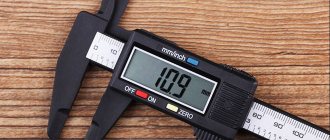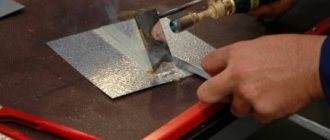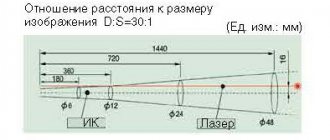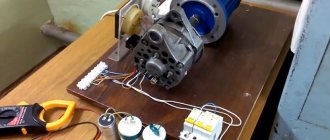A person who is concerned about his health, the state of the environment and wants to know radioactivity indicators at any necessary moment buys a dosimeter . However, in practice, at first the question may arise: “ How to check the radiation level correctly and as accurately as possible?” After all, you can find yourself in different situations and pursue different tasks, so life can depend on understanding the dosimeter readings.
What is used to measure radiation is clear to everyone interested in this issue - these are dosimeters , which can be household and professional. The popular device for measuring radioactivity RADEX is recommended for home use, although it has the characteristics of professional devices. It has all the necessary functions and has a completely clear measurement process. As they say, you definitely can’t go wrong with him.
Before testing a radiation meter in practice, you need to know the indicators that you should focus on. These include dose and dose rate (DDR). Let's take a closer look at how to use the dosimeter to find out these parameters and analyze them correctly.
What is a dosimeter and what is it for?
A person is constantly exposed to radiation in the form of sunlight, some types of which are more harmful to the body. Too much ultraviolet light can cause sunburn or skin cancer, and x-rays, gamma rays and some radioactive particles can cause blindness and severe cell damage, even death.
To prevent this, every person working with radioactive substances or the environment wears a dosimeter - a device designed to measure radiation.
This simple device allows users to track the radiation they absorb to prevent illness and determine how dangerous a radioactive environment may be.
A dosimeter for measuring radiation is usually used in the form of a badge or bracelet, there are portable and pocket models. They contain phosphor crystals capable of trapping electrons released by harmful ionizing radiation
Attention! The radiation dosimeter meter cannot detect low-energy beta radiation from some isotopes. Also carbon-14, tritium or sulfur-35.
The purpose of wearing personal dosimeters is given to workers who deal with X-ray machines and fluoroscopic installations. They should also be used by persons working in industrial areas.
Radiation dosimeters are self-installed in radioactive environments to monitor the average amount of radiation released, but are most often worn by researchers, maintenance personnel, and other officials working with or around radiation. Employees of many university departments carry them with them, as do employees of nuclear power plants and some hospitals. Chemotherapy patients often use them during treatment to ensure that the amount of radiation they are exposed to remains in a useful range and not in a potentially lethal range.
Types of sensitive elements
The most common are mica Geiger detectors, which allow you to determine alpha and beta radiation with high accuracy. Such elements are provided for wearable small-sized devices, including those intended for domestic use. A group of gas-discharge sensitive components is also popular, which are also used in compact devices, but they can only record critical amounts of radiation. Miniature thermoluminescent lamps are used especially for working with X-ray background radiation. Multifunctional versions of devices are designed for complex measurements. These include the DKS-96 dosimeter-radiometer, which optionally supports the function of measuring the density of beta and gamma radiation. That is, depending on the target task, you can enable operating modes with different detectors integrated into one device.
Operating principle of the dosimeter
Ionizing radiation, caused by exposure to x-rays, gamma rays and some radioactive particles, is a type of radiation that carries enough energy to knock electrons out of normally stable molecules. When this occurs in living tissue, the loss of electrons can damage the cell, but the same liberated electrons can be captured and measured under the right conditions. Radiation dosimetry works by taking advantage of this.
The operating principle of the dosimeter is based on the capture of ionizing radiation by electrons; they are captured by phosphor crystals. When the latter are heated, these captured electrons are released in the form of light to accurately determine the amount of radiation to which the device was exposed.
Some models are filled with argon, to which voltage is supplied from two electrodes. Beta particles pass through the sensor chamber, ionization of the gas begins, this leads to an increase in the conductivity of argon. The result is an electrical discharge that reduces the voltage in the electrodes to 0. Then the chamber with argon is quickly restored and is ready for a new radiation measurement.
Attention! When turned off, the radiation dosimeter circuit is in micro-consumption mode. It only supports the processor's real-time counting process.
The measured level is recorded in the microprocessor board, which turns them into digital values
Differences between household models and professional ones
Devices for use in the household to determine natural background radiation indicators, as a rule, have a modest option, a minimal set of tools for processing the data obtained, and do not always provide for separation by radiation spectra.
The standard device of this type is a pocket dosimeter, the task of which is to record extreme readings that are unacceptable in everyday conditions. Such devices do not always have displays, but are necessarily provided with indication means in the form of audible alarms and LED lamps.
Professional dosimeters-radiometers can also be small in size, but their list of tasks includes accurate and detailed analysis of recorded radiation. Some models are capable of separately measuring alpha, beta and gamma spectra, reporting threshold levels relative to different reference values during processing. For example, the same value can be assessed both from the point of view of danger to humans and in the context of causing harm to the environment.
How is radiation measured by a dosimeter?
The action is based on measuring ionization over a certain time, that is, the exposure dose rate. Radioactive radiation is measured in micro-Roentgen/hour.
To assess the impact on the human body, the concept of equivalent dose and its power is used. The measurement takes place in Sieverts (Sv). 1 Sv = 100 Roentgen.
The quality factor of the equivalent dose of a dosimeter is a characteristic of radiation and shows biological activity, that is, the ability to cause damage to biological tissue
Model DKS-96
The device is widely used in various areas, as it includes a large list of detectors. The sensitive elements of this model make it possible to comprehensively examine the radiation situation, identify radiation sources, determine the types of ionizing objects, etc. Like the Terra dosimeter-radiometer, this version offers rich communication tools. And if the MKS series device makes it possible to transmit data directly to a PC with subsequent processing, then the DKS-96 device, within the framework of its functionality, allows you to generate terrain maps indicating target locations through a GPS sensor.
Directly at the work site, the operator can receive information about the dose, its power and degree of contamination on a previously approved scale. Special operating modes are also provided - for example, accelerated control with several threshold levels. What is also important is that the DKS-96 dosimeter-radiometer can be used as a stationary instrument both indoors and on board a vehicle.
What does a dosimeter consist of?
The case is shockproof. Made of high quality plastic. The front panel contains buttons and a matrix LCD. A USB connector is installed at the end for convenient reading of results using a smartphone or personal computer. There is also an LED indicator and an audible alarm hole.
On the back of the case the manufacturer indicates the model serial number and other symbols
The dosimeter device may include:
- several detectors for measuring different types of radiation;
- removable filters;
- counting device;
- dose indication system.
The main part of a metrological device is the radiation detector. It is endowed with the ability to convert radiation into an electrical signal, which is convenient to process.
The device may also have a voltage multiplier, coupling capacitors, monovibrators, converters, modulators, resonators, electronic and control units. The gas-filled chamber is often a Geiger-Muller counter. It is simple and low cost.
Crystals can be organic or inorganic. The dosimeter device includes solid-state semiconductor detectors. The main advantage is its compactness and use for monitoring radiation of any kind. But the accuracy of a solid-state radiation dosimeter is low.
Model MKS-05 "Terra"
A high-tech solution in the form of a small-sized device designed for control analysis of the radiation situation. The developers of the device relied on expanding communication capabilities, which was expressed in the form of an integrated Bluetooth module. The received data can be sent wirelessly to a PC, saved there, kept statistics and generated cartography indicating critical zones affected by radiation. By default, the MKS-05 Terra dosimeter-radiometer is focused on recording the power indicators of the ambient equivalent of gamma radiation, but if desired, it can also be configured to determine the density of beta fluxes. The model also supports the function of operational research (in 10 seconds), saving up to 1200 records and controlling operating modes via a computer via Bluetooth. The possibility of synchronizing the device with mobile devices on the Android platform is not excluded. In this format of use, you can also connect the intelligent programming mode of the detector.
How to use a radiation dosimeter
Before determining the radiation dose using a personal dosimeter, it is necessary to reset the previous readings. Place the switched-on device in your pocket. To work with the dosimeter, you do not need special knowledge; everything is described in the instructions for the device.
How to quickly find a radioactive object
First of all, the device must be turned on. In the menu, select the desired measurement mode, for example, CPM (a special measurement mode that does not make recalculations and does not calculate the average value). Then confirm the selected parameter by pressing the “select” or “start” button.
Move the radiation dosimeter slowly over suspected radiation sources
Important! The closer the device is to an object, the faster the frequency of sound signals increases, and as it moves away, it decreases.
Measuring background radiation with a dosimeter in a house or apartment
The source of radiation in a residential area can be building materials, furniture, household appliances, measuring devices, objects made of granite and crystal. An apartment inspection allows you to promptly identify the source of dangerous radiation.
Attention! Its measurement is necessary to provide residents with an environmentally friendly and safe living space.
Instructions for using the dosimeter in an apartment:
- Turn on the device by pressing the corresponding button.
- Check the charge of the model.
- Wait 2-3 minutes. The device must adapt to give the most accurate result. If you use the readings that appear in the first seconds of measurement, there will be a very large measurement error.
- Move around the apartment, sometimes lingering near objects that are considered radiation. Until reliable statically processed information is received, the digital indicator on the radiation dosimeter will blink. The duration of data processing depends on the radiation intensity.
- Bring it as close as possible to walls, central heating radiators, tiles, marble and granite countertops.
The readings of an individual dosimeter in an apartment should be within 10-30 µR/h. At the same time, radioactivity up to 50 μR/h is considered safe for humans.
Measuring radiation levels with a dosimeter on the street
When taking measurements, keep the device horizontally, approximately 1 m from the ground. Before starting work, press the “Start” button and after the sound signal, record the readings of the device.
Advice! It is recommended to take measurements at one place 5 times to get more accurate values.
If the radiation dosimeter shows high values on the street, you need to move a few steps to the left or right and repeat the background radiation measurements. We need to find the point with the maximum value.
Then place the radiation dosimeter at different points on the street. For example, next to the house, in a garden bed, flower bed, near the basement
Do not place on dirty surfaces. Place a piece of plastic film under the dosimeter. Calculate the average after 4 measurements.
GREENEST ECO 6
- Sensor type – Geiger counter SBM-20.
- Gamma radiation dose rate – up to 1000 µSv/h.
- The registered energy of gamma radiation is from 100 keV.
- Measurement error – 20%.
- Dimensions – 122x52x14 mm.
- Weight – 85 g.
GREENTEST ECO 6 is a multifunctional device that includes a dosimeter, nitrate tester and water hardness meter. The model is capable of measuring the level of background radiation on the ground and from specific objects using gamma and X-ray radiation. The device is characterized by a convenient and understandable menu and command selection, high performance, a bright modern display, as well as the accuracy of the radiation dosimeter.
The power source is a built-in lithium-ion battery with a capacity of 1000 mAh. This is enough for six hours of continuous operation. The body of the device is made of impact-resistant plastic. It is worth noting that the degree of resistance of the case to the penetration of dust and moisture corresponds to class IP-20. The device cannot be used in the rain or in highly dusty areas. Relative disadvantages include the inability to connect the device to a computer. The average service life, subject to operating rules, is five years. The model is covered by an official warranty from the manufacturer, which is valid for one year.
What to do if the dosimeter readings are high
If the dosimeter shows a high level of radiation, you need to move away from the source. The further away an object emitting a radioactive background is located, the lower the radiation dose for a person.
The discovered item must not be thrown in the trash, touched or sold. In such a situation, contact a center that deals with the disposal of radiation waste. In Moscow it is FSUE Radon. You also need to come to the Center for Hygiene and Epidemiology. Specialists are obliged to respond to the received signal, inform the relevant authority so that they check the radiation level using professional devices.
Attention! Until the police or other authorities arrive, follow their instructions.
Model MKS-AT1117M
A small but richly equipped device with which you can record the parameters of the ambient equivalent power and dose of alpha, beta and gamma particles, as well as the neutron flux density. The model is also equipped with different detector blocks, which are selected depending on the specific research objectives. Processing can be done both through a PDA and a computer. It is worth emphasizing that the advanced communication capabilities with third-party devices precisely reflect the nature of the instrument’s operation. The modest volume of data recording, for example, does not allow the use of the MKS-AT1117M dosimeter-radiometer in long-term complex examinations without transferring the results to the same PC. It is especially important to provide for this possibility due to the information content of the information. The user, in addition to standard parameters, can record surface radiation activity, fluence and other indicators, saving with them data about the area under study.
Counters for dosimetry of the whole body [edit | edit code]
TBMA [edit | edit code]
Bomab (The BOttle MAnikin Absober) is a phantom developed in 1949 and has since been adopted in North America, if not throughout the world [ specify
] as an industry standard (ANSI 1995) for the calibration of dosimeters used for whole body counting.
The phantom consists of 10 plastic bottles, either cylinders or elliptical balloons, which are its head, neck, chest, abdomen, thighs, legs and arms. Each section is filled with a radioactive solution in water, the radioactivity of which is proportional to the volume of each section. This simulates a uniform distribution of material throughout the body.
Examples of radioactive isotopes used to calibrate measurement performance are 57 Co, 60 Co, 88 Y, 137 Cs, and 152 Eu. [ source not specified 788 days
]
Pulmonary counter [ edit | edit code]
Lung Counter is a system designed to measure and count radiation from radioactive gases and aerosols that are inhaled by humans and are sufficiently insoluble in body tissue to leave the lungs over a period of weeks, months or years. Consists of a radiation detector or detectors and associated electronics.
Often such a system is located in the lower floors of premises (to protect against the hadronic component of the cosmic background) and is surrounded by protection from background gamma radiation (thick walls made of steel, lead and other heavy materials) and neutron radiation (cadmium, boron, polyethylene).
Since the pulmonary counter is primarily used to measure radioactive substances that emit low-energy gamma or x-rays, the phantom used to calibrate the system must be anthropometric. Such a phantom of a human torso was developed, for example, at the Lawrence Livermore National Laboratory. E. Lawrence (Torso Phantom). [ source not specified 788 days
]
General principle of measurement [ edit | edit code]
As a recording element of radiation in dosimeters, gas-discharge indicators of ionizing radiation are used, based on the effect of avalanche breakdown of ionized space, at a field strength close to the critical one, but not exceeding it. saturated state is maintained in the interelectrode space of the Geiger counter
, but below the limit
of independent breakdown
(glow discharge).
These are the boundaries of the Geiger plateau
- a horizontal section on the current-voltage characteristic of these sensors. In this state, a field strength is maintained in the space of the sensor, which is the maximum for a given distance between the electrodes, but is insufficient for an independent breakdown to occur between them, and the sensor is kept in a locked boundary state.
Types of ionizing radiation
Ionizing radiation is a type of energy that is released by atoms in the form of electromagnetic particles or waves. Radioactivity is the spontaneous decay of atoms. The excess energy that arises is a form of ionizing radiation. Unstable elements that form during decay and emit ionizing radiation are radionuclides. The following types of ionizing radiation are distinguished:
- neutron;
- alpha;
- beta;
- gamma;
- X-ray.
Each type of ionizing radiation has personalized indicators of penetrating ability and other characteristics that affect the degree of exposure (accordingly, requiring various measures to ensure the safety of human health).











